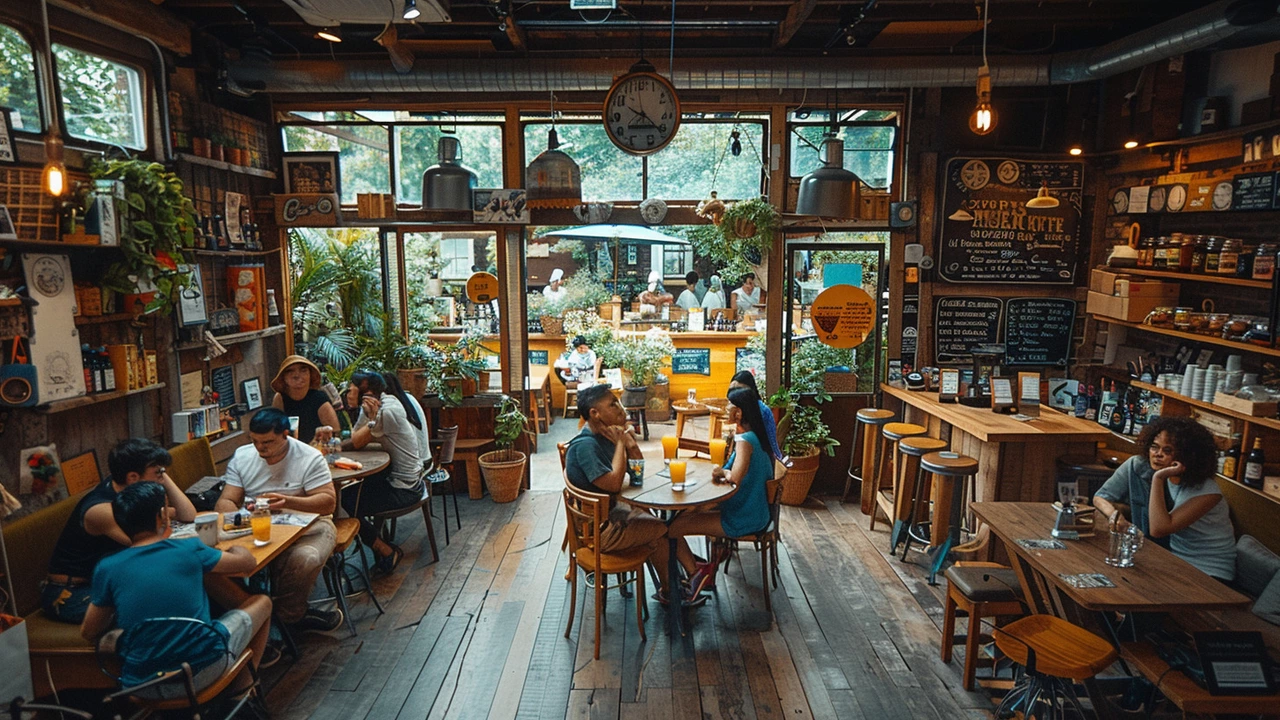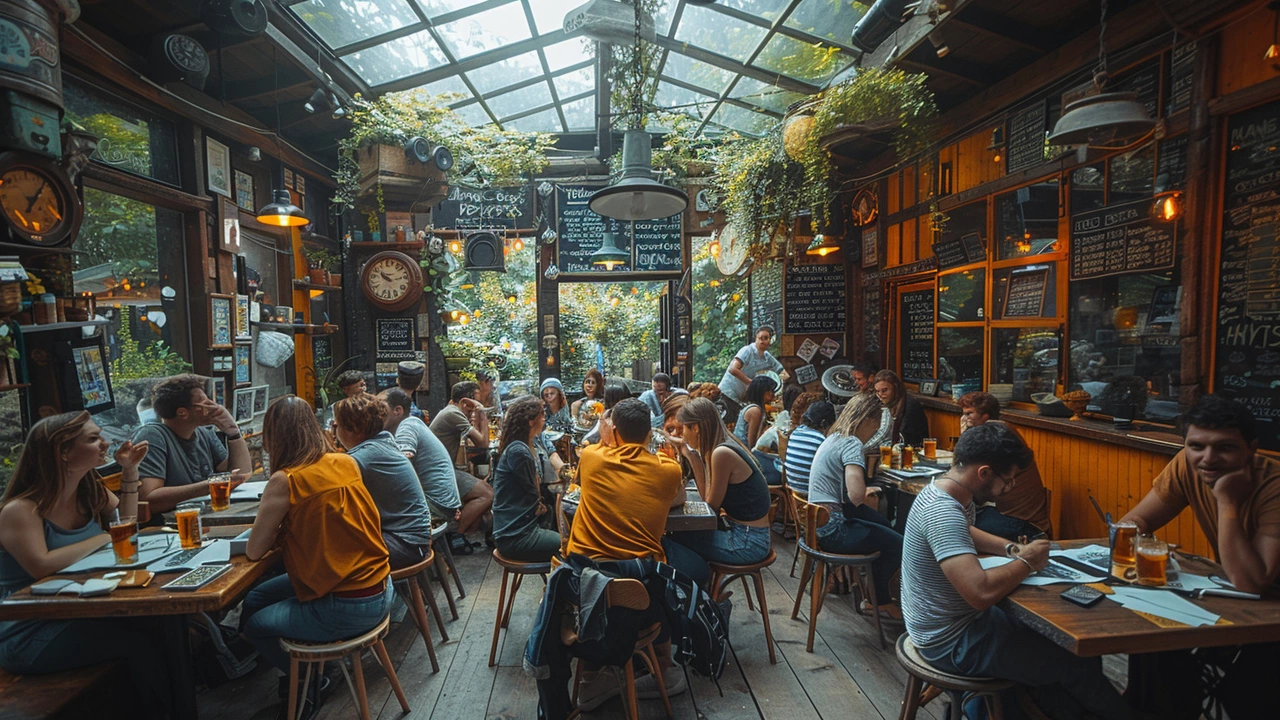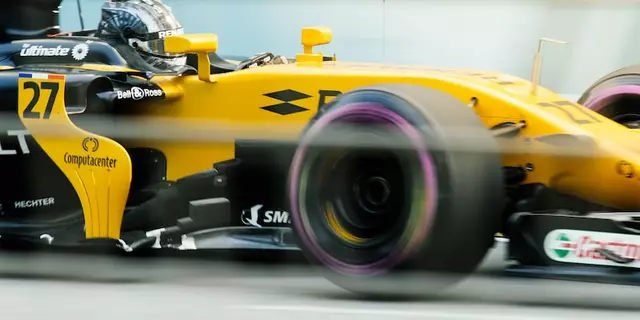Have you ever considered meeting your future partner in a matter of minutes? Speed dating might just be the answer. It's a dynamic and structured way to meet new people, offering an exciting alternative to traditional dating methods.
The concept of speed dating is simple: participants go on a series of short dates, typically lasting between three to ten minutes. This whirlwind approach allows you to quickly gauge your interest and compatibility with a variety of potential partners in one evening. Sounds intriguing, right?
The events are carefully organized to avoid chaos and ensure that each participant has the opportunity to meet as many people as possible. After initial registration, there's usually a casual mingling session before the main event begins. Participants are then split into two groups: one group remains seated, while the other rotates. Each
- What is Speed Dating?
- How Speed Dating Works
- Pros and Cons of Speed Dating
- Tips for a Successful Experience
What is Speed Dating?
Speed dating is a unique and efficient way to meet many potential romantic partners in a single evening. Originating in the late 1990s, this concept was developed as an alternative to traditional dating for busy professionals who wanted to maximize their social opportunities without committing to lengthy dates with each individual. The format is simple yet powerful: a series of quick, timed 'mini-dates' that typically last between three to ten minutes.
Participants gather in a venue, such as a bar, café, or restaurant, where the event is hosted. After a brief introduction and ice-breaking session, they are typically divided into two groups. One group remains seated, while the other group rotates from seat to seat. This setup ensures that everyone has the chance to interact with a variety of people in a structured and efficient manner.
The brief duration of each date means that first impressions are crucial. It's an environment that encourages you to quickly assess whether there's mutual interest and chemistry. Organizers usually supply participants with scorecards or match sheets where they can note down their feelings and preferences about each person they meet. At the end of the event, these scorecards are collected and any mutual matches are shared with the participants, often leading to further communication and potential dates.
If you're wondering how speed dating came into being, it was actually created by Rabbi Yaacov Deyo as a method for helping Jewish singles meet in a quick and efficient manner. Since then, speed dating has grown in popularity and is now a common dating method worldwide, catering to a wide range of interests and age groups. According to a study by the University of Pennsylvania, speed dating has proven to be an effective way for singles to evaluate a large number of potential partners in a relatively short period.
"Speed dating is like the Twitter of the dating world - concise, to the point, and sometimes surprising," says relationship expert Dr. Samatha Daniels.
A typical speed dating event is not just about finding love; it's also about socializing, networking, and having fun. The light-hearted atmosphere can ease the pressure that often accompanies traditional dating. Plus, even if a romantic connection isn't made, participants often leave with new friends and acquaintances.
For those tired of online dating and conventional meet-ups, speed dating offers a refreshing and engaging alternative. It blends the excitement of meeting new people with the convenience of doing it all in one evening. It's no wonder that it continues to be a popular choice for singles looking to add a spark to their dating lives.

How Speed Dating Works
Speed dating is a well-organized event aimed at bringing people together in a fun and efficient way. These events are typically held in bars, cafes, or restaurants that provide a relaxed atmosphere conducive to casual conversation. Here's a detailed breakdown of the mechanics behind speed dating.
To participate, you first need to register online or through the event organizer’s website. This step is crucial as it ensures a balanced number of participants and helps tailor the event to specific age groups or interests. On the event day, participants usually arrive a bit early for check-in and mingling.
The event kicks off with an informal mingling session prior to the speed dating rounds. This helps to break the ice and ease everyone's nerves. When it's time to start, participants are divided into two groups: one group stays seated at individual tables, and the other group rotates when the timer goes off.
Each ‘date’ or round lasts between three to ten minutes, depending on the specific event. During this brief period, you have a conversation with your partner to quickly determine if there is any mutual interest or chemistry. Think of it as an accelerated first date – get to know their name, what they do, their interests, and see if any sparks fly.
A distinctive feature of speed dating is the use of a timer to mark transitions. When the time is up, a bell or other signal prompts the moving participants to shift to the next table. This fast-paced structure helps keep conversations concise and to the point, allowing participants to meet a large number of people in a short time.
Participants are often given scorecards or some form of a note-taking system to jot down impressions or potential matches. These notes are vital for later reference, ensuring you can recall who piqued your interest among the whirlwind of brief encounters.
“Speed dating is like dating's answer to networking events– you get to meet many people in a short span, which can be both thrilling and exhausting,” says relationship expert, Dr. Laura Berman.
After the rounds are completed, there is usually another mingling session. This stage offers a more relaxed environment to follow up on initial connections. Some events also provide refreshments or entertainment during this period, adding to the social ambiance.
The final step involves the organizers collecting the scorecards to identify any mutual interests. Participants typically receive the results within a day or two, providing information about who reciprocated their interest. If a match is found, contact details are shared, allowing pairs to arrange a more traditional date.

Pros and Cons of Speed Dating
Speed dating offers an exciting, fast-paced approach to meeting potential partners. It's designed to maximize interactions within a short period, which has its own set of benefits and drawbacks. Let's delve into the pros and cons of this popular dating method to give you a clear picture.
Pros of Speed Dating
One of the standout benefits of speed dating is the ability to meet a lot of people in a very short time. When you consider traditional dating methods, it could take weeks or months to go on the same number of dates that a speed dating event can squeeze into one evening. This efficiency makes speed dating ideal for busy professionals or those looking to optimize their social calendar.
Another significant advantage is the chance to make snap judgments and quick decisions about compatibility. Within just a few minutes, you can usually tell if there's chemistry—or a complete lack thereof. This can save a lot of time and emotional investment on dates that might not be a good fit. Plus, it adds an element of fun and excitement as you get to meet many new faces.
Speed dating is also an excellent way to practice your social skills. Whether you're naturally introverted or extroverted, these events provide a structured setting to engage in multiple conversations. This can help boost confidence and conversational abilities, which are useful in all areas of life.
"Speed dating offers an efficient yet thrilling way to gauge chemistry, making it perfect for those looking to find a connection without an endless dating process." – John Smith, Relationship Expert
Cons of Speed Dating
However, speed dating isn’t without its flaws. One of the main drawbacks is the pressure to make a good first impression. With such limited time, participants may feel rushed to showcase their best selves, potentially leading to a superficial understanding of each other. This urgency can be stressful and detract from genuine interactions.
Another downside is the feeling of being rushed between dates. Although the time limit ensures you meet many people, it can also result in conversations feeling cut off just as they're getting interesting. There’s also the possibility that the person you're genuinely interested in may not feel the same way, leading to disappointment.
Additionally, there's no guarantee of finding a long-term partner. While speed dating events are designed to facilitate meaningful connections, the format is inherently brief. This can make it challenging to gauge deeper compatibility factors that are crucial for lasting relationships. It's important to manage expectations and understand that not every speed date will lead to something serious.
Some participants also find the structured nature of speed dating a bit too rigid. The format can sometimes create a mechanical feel, which may not appeal to everyone. It’s worth considering if this type of environment suits your personality and dating style.

Tips for a Successful Experience
Entering the world of speed dating can be exhilarating but also a tad overwhelming. To make the most out of this adventure, here are some practical tips to guide you. First off, come prepared. Think about what you want to ask and what impression you hope to leave behind. It could be helpful to jot down a few conversation starters. Asking about hobbies, favorite travel destinations, or even a recent book can effectively break the ice.
Next, practice active listening. It can be tempting to do all the talking, especially if you are nervous, but listening and showing genuine interest in what the other person says is crucial. Maintain eye contact, nod, and provide feedback to demonstrate your engagement. Remember, people appreciate someone who listens as much as they enjoy someone who talks.
Authenticity is another key factor. Don’t try to be someone you’re not. Be honest about your interests, your quirks, and what you’re looking for. Authenticity will resonate more deeply than a fabricated persona, and it’s more sustainable in the long run.
Avoid controversial topics in these short dates. Politics, religion, and other potentially divisive subjects are best left for deeper, more private conversations later on. Keep things light, fun, and respectful. The goal is to leave a positive impression, not to spark a debate.
Dress appropriately and comfortably. While first impressions matter, it doesn’t mean donning your best suit or dress. Smart casual is often the best way to go—it shows you care while still being approachable. Comfort will also help you feel more at ease, allowing your natural personality to shine through.
Bring a positive attitude. Even if you’re nervous, try to maintain a cheerful outlook. A smile can go a long way in making connections. Often, the energy you bring into the room will be reciprocated by those you meet.
At speed dating events, you will typically be given a scorecard to jot down notes or rate your interest in each person you meet. Use it wisely but discreetly. Don’t let the other person see your notes, and certainly don’t make it obvious that you are judging them. These notes will be crucial for remembering who stood out after meeting so many people in such a short time.
Lastly, embrace the experience. Speed dating may not always produce immediate love connections, but it is a unique way to meet new people and hone your dating skills. With an open mind and the right approach, you’re sure to have a memorable and fruitful experience.





